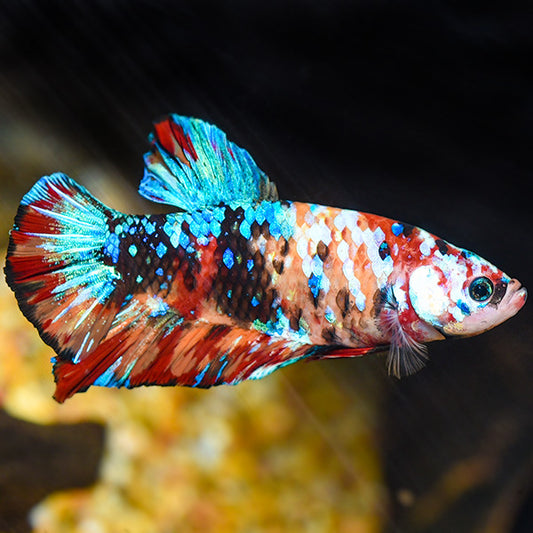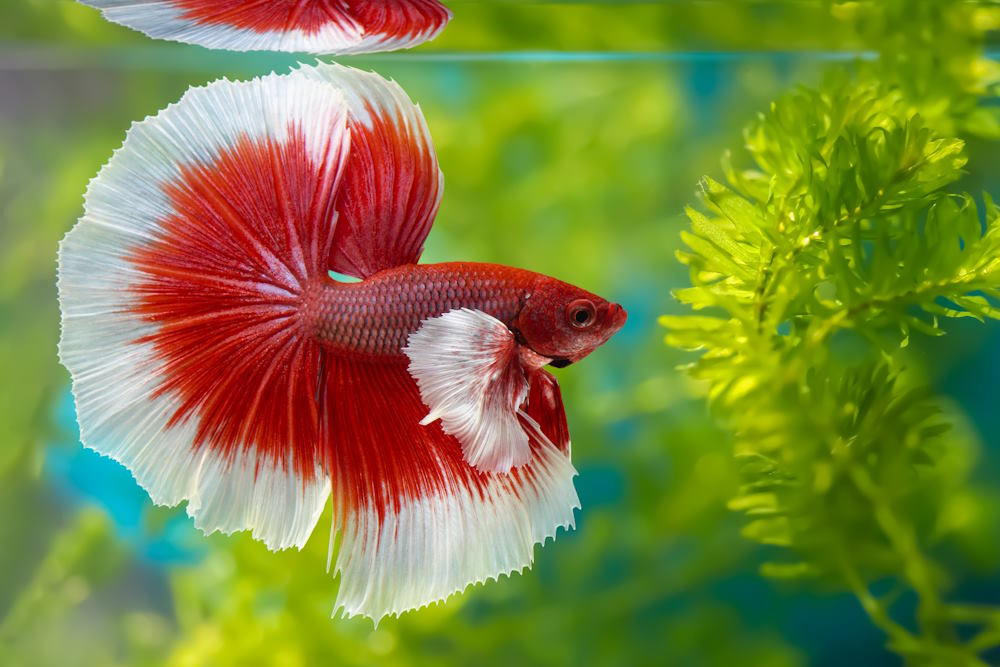Betta Fish Care: Vital Tips for a Healthy and Delighted Pet
Betta Fish Care: Vital Tips for a Healthy and Delighted Pet
Blog Article
Breeding Betta Fish: a Comprehensive Step-By-Step Guide to Successfully Raising Infant Bettas From Eggs to Their Adult Years
Reproducing Betta fish is a meticulous venture that requires cautious planning and implementation to make sure the successful development of fry from eggs to mature fish. As the male Betta diligently constructs a bubble nest and guards the precious eggs, the succeeding stages of treatment and shift demand attention to information and understanding of ideal practices.

Picking Reproduction Pairs
When starting the trip of breeding Betta fish, selecting the ideal reproduction sets is vital to achieving desirable traits and a healthy and balanced family tree - betta fish. The very first step in this procedure is to identify the specific qualities you want to improve or maintain, such as color, fin type, and body shape. It is important to select genetically diverse sets to stay clear of inbreeding, which can lead to health and wellness concerns and undesirable characteristics
Evaluate possible reproducing candidates thoroughly. A healthy male Betta needs to show lively colors, an active behavior, and well-formed fins, while the woman must also display vibrant pigmentation and a rounded stubborn belly, indicating readiness for spawning. Observing the personality of both fish is crucial, as aggressive or overly timid individuals might not reproduce efficiently.
Keeping documents of the moms and dad fish's origins can assist you track hereditary attributes and possible problems. Eventually, spending time in the option process will considerably enhance the probability of producing strong, dynamic spawn that meet your breeding goals.

Preparing the Reproduction Storage Tank
Developing an optimal breeding setting is an essential action after selecting ideal pairs for Betta fish. The reproduction container ought to be especially made to offer comfort and stimulate the all-natural reproduction actions of the fish. Start with a storage tank size of a minimum of 10 gallons to ensure appropriate space for both the male and female Bettas.
Maintain a mild filtration system to maintain the water tidy while preventing solid currents that can worry the fish. In addition, an air stone can be added to give oxygenation without interrupting the water surface excessive.
Temperature law is important; go for a secure range of 78-82 ° F(25-28 ° C) using a trustworthy heating unit. The pH level should be preserved between 6.5 and 7.5, and regular water modifications are needed to ensure high water top quality.
Integrate drifting plants or spawning sponges to produce hiding places for the woman, while also motivating bubble nest structure by the male - betta fish. Lastly, ensure the tank is devoid of sharp decorations and any the original source kind of possible hazards, as the well-being of the fish should always be prioritized throughout this vital stage of reproduction.
The Breeding Process
Typically, the breeding process for Betta fish involves a collection of distinct and observable actions that show readiness for reproduction. The male Betta starts by building a bubble nest at the water's surface, which acts as a website for the fertilized eggs. This nest is crucial, as it provides a safe atmosphere for the eggs till they hatch out.
Once the nest is developed, the male will show courtship behaviors, such as flaring his fins and showing dynamic shades to attract the female. The lady, upon sensing the man's readiness, will respond click now by presenting vertical stripes along her body, signifying her receptiveness.
The fertilized eggs then fall to the bubble nest, where the male carefully gathers and returns them to the nest. Following this, the male assumes obligation for safeguarding the nest and making sure the safety and security of the eggs till they hatch out, typically within 24-36 hours.
Taking Care Of Betta Fry
Taking care of Betta fry requires mindful attention to their setting and nourishment to guarantee healthy and balanced growth and growth. After hatching, Betta fry are exceptionally little and prone, necessitating a steady and tidy habitat. Preserving a water temperature between 78 ° F and 80 ° F is essential, as Betta fry thrive in cozy conditions. In addition, guarantee that the water is complimentary of dangerous toxic substances; routine water changes of 10-20% are suggested to keep optimal water quality.
Feeding Betta fry is equally crucial. At first, they ought to be provided infusoria or carefully crushed top notch fry food, as their mouths are too small to deal with bigger bits. As they grow, you can progressively introduce larger foods, such as baby salt water shrimp or powdered flakes, to guarantee they receive appropriate nourishment. Feed them percentages a number of times a day, being mindful not to overfeed, which can cause water quality issues.
Transitioning to Grownup Bettas
As Betta fry fully grown, transitioning them to adult Bettas is an essential stage that calls for mindful monitoring of their setting and social communications. This process usually begins when the fry reach around 6 weeks of age, whereupon they can be gradually presented to a much more organized living atmosphere.
To facilitate this shift, it is vital to make sure that the water parameters-- such as temperature, pH, and ammonia degrees-- are optimum and secure. Grown-up Betta fish thrive in cozy water (around 78-80 ° F) with a pH of 6.5 to 7.5. Progressively adapt the fry to these conditions to reduce anxiety.
Social interactions are another essential variable; man Bettas are infamously territorial and hostile. Consequently, it is a good idea to different males into private storage tanks as they develop. Female Bettas can be housed with each other, however treatment must be taken to check for indicators of aggressiveness.
In addition, dietary modifications must be made as the fry expand. Incorporate high-quality pellets and live foods to sustain their development and health. By handling these elements properly, you can advertise a successful shift to adulthood for your Betta fish.

Conclusion
Effective reproduction of Betta fish calls for mindful focus to detail throughout the whole process, from selecting genetically diverse pairs to offering ideal care for fry. By guaranteeing suitable reproduction conditions and keeping water top quality, the possibility of healthy and balanced spawn increases substantially. In addition, a balanced diet and progressive adjustment to grown-up atmospheres are crucial for the growth and advancement of Betta fish. Complying with these steps carefully fosters a thriving populace of Betta fish, boosting both important source their wellness and vitality.
Report this page